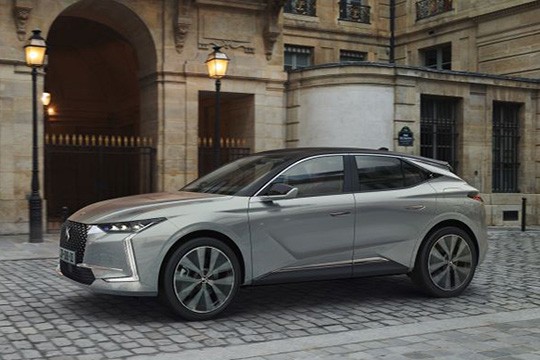DS AUTOMOBILES DS 4 Models/Series Timeline, Specifications & Photos
First production year: 2021
Engines: Gasoline, Diesel, Hybrid gasoline
The 2021 DS 4 continued the saga of the Citroen C4 Coupe introduced by the French automaker in 2010 but under a new brand, DS Automobiles, which was established in 2016.
Citroen launched the DS Automobiles brand in 2016 as a premium automaker. It followed the same strategy used by Honda with the Acura, Nissan with Infinity, and Toyota with Lexus. After the launch of the DS Automobiles, the new car manufacturer refreshed and rebranded other vehicles it produced under the double-chevron brand, such as the DS3 and the DS 5. Then, the French premium automaker launched specific products that didn’t share their look with other Citroen cars, such as the DS 9 or the DS 4. While the former was a four-door sedan, the latter was a crossover coupe that shared its underpinning with the Peugeot 3008 and the Opel Astra L. Moreover, it wasn’t built in France but at Russelsheim, in Opel’s factory, since the PSA (Peugeot-Citroen) Group bought the German automaker in August 2017, and all of them were already in the Stellantis Group, which was established at the beginning of 2021. The car replaced the DS 5 and targeted customers who wanted a crossover with a stylish look and premium features.
The car’s front fascia resembled the one already installed on the DS 9, featuring a broad hexagonal grille adorned by chromed elements and extended with wings on the MATRIX LED headlights. To emphasize the car’s width, DS placed tall and slim turn signals lower on the bumper that lit between two narrow vertical LEDs for the daytime running lights. The automaker added a secondary broad air intake on the apron above a slim splitter.
With its coupe-shaped bodywork and higher ground clearance than regular coupes, the DS 5 presented itself as a stylish vehicle. Its sculptured doors and black side sills emphasized the premium aspect of the crossover and gave it a commanding look on the road. Furthermore, the bi-tone door mirrors and the contrasting roof and pillars were highly appreciated by customers. The sloped-down tailgate sported a roof spoiler at the upper side. Finally, at the back, the taillights featured a jewel-like 3D design. They were extended from the quarter panels onto the tailgate. Lower, under the bumper, the automaker placed side-mounted trims that mimicked exhausts.
Inside, the DS 5 boasted a high level of elegance mixed with functionality. It didn’t fall into the trap of the free-floating display trend and integrated it into the dashboard, next to the digital instrument panel that was fronting the driver. The center console housed the gear selector button and a touchscreen that acted as a mousepad for the infotainment’s touchscreen. A chromed line adorned the upper sides of the front doors and integrated the buttons for the power windows, while below the armrests were the aluminum door handles. In the back, the DS 5 provided enough legroom and headroom for two adults, albeit a third passenger couldn’t seat comfortably over long distances. The split-folding (60/40) bench seat enlarged the trunk for bulkier items.
Under its hood, DS Automobiles installed a choice of five engines, with or without electrification, all turbocharged, with or without electrification. All versions sent their power to the front wheels via an eight-speed automatic transmission.
